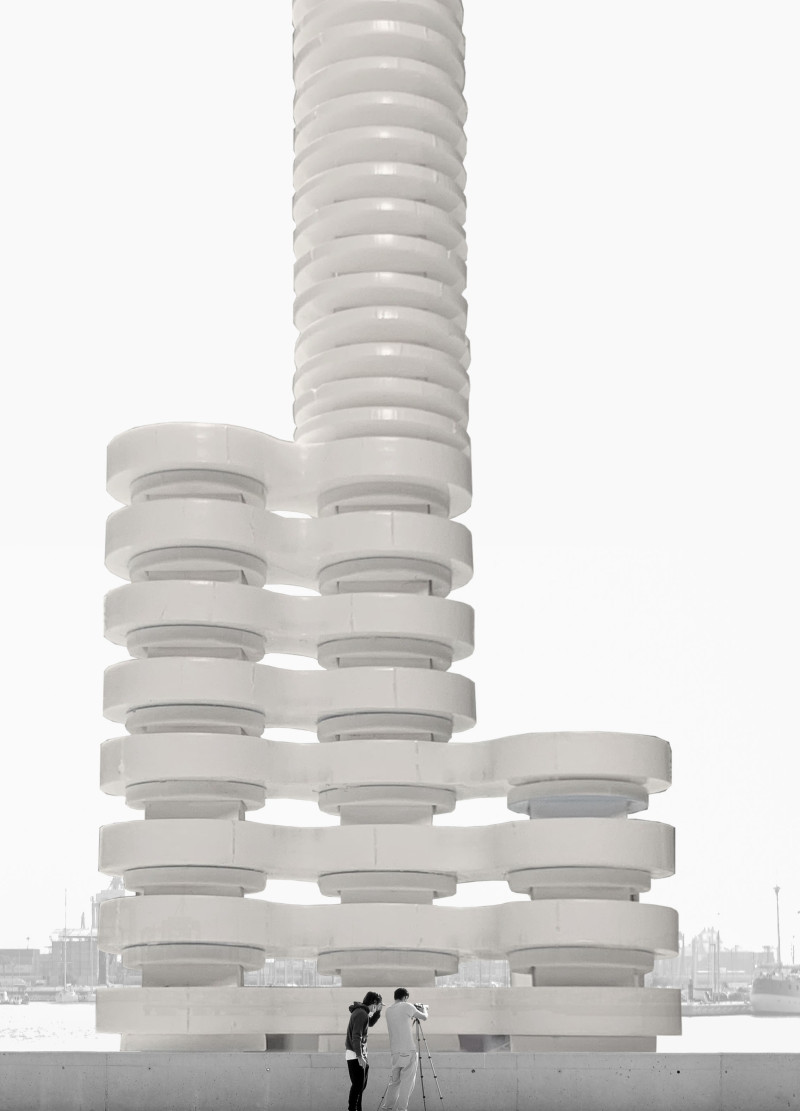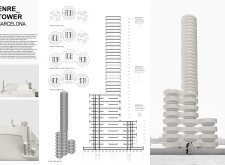5 key facts about this project
En_RE Tower stands as a noteworthy addition to the landscape of Barcelona, located in the port area known for its collection of significant skyscrapers. At 200 meters tall, the building combines workspace with sustainability, setting a relevant example for urban design. The tower is not just an office space; it is also designed to produce energy from renewable sources, aligning with modern environmental goals.
Architecture Concept
The design focuses on versatility and adaptability, offering three types of office layouts to meet various corporate needs. Each layout allows for flexible arrangements, catering to today's work patterns where collaboration and individual spaces are essential. The first two office types feature double-height areas, promoting openness while including spaces for lunch and relaxation, which aim to enhance the overall work atmosphere.
Sustainability Initiatives
A core aspect of the tower is its dedication to sustainability. The building harnesses wind, hydro, and solar energy, responding to pressing environmental concerns in urban settings. This approach emphasizes that skyscrapers can serve dual purposes: they can function as office spaces while also generating renewable energy for their operations.
Structural Design
The tower employs a construction method that uses metallic beams linked to concrete cores. This strategy allows for an open floor plan, creating an efficient workspace that is flexible in use. The combination of sturdy materials ensures stability while offering the design needed for modern office environments.
Visual Impact
The tower's location along the coast enhances its presence in the urban environment. The design thoughtfully maximizes both views and the ability to capture renewable energy. Through this architectural response, the building plays a role not just as a workspace but also as a point of interest in terms of sustainability within the city.
The integration of varied office heights and dedicated relaxation areas enriches the internal environment, promoting a balance of functionality and comfort. This thoughtful design reflects a modern approach to workspaces, focusing on both productivity and well-being.


















































